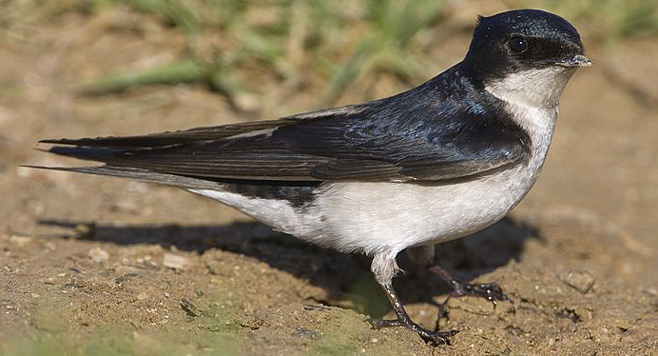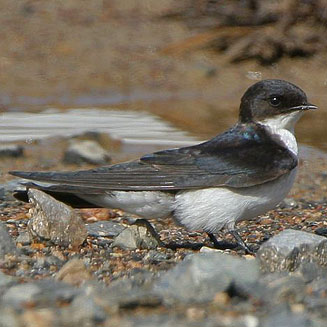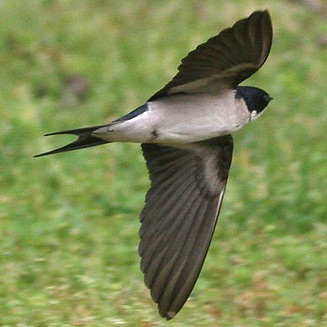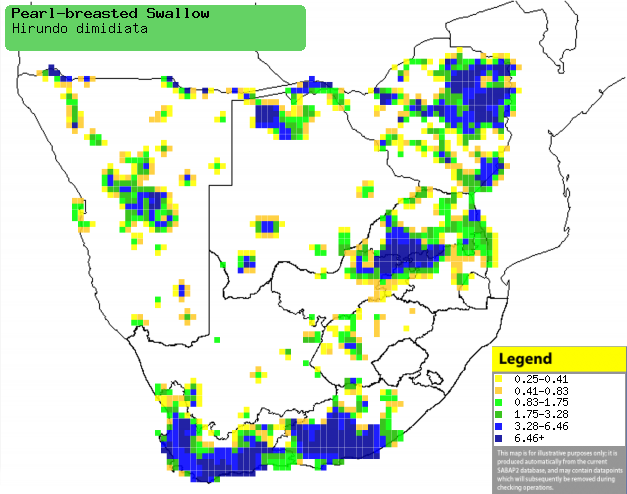|
Hirundo dimidiata (Pearl-breasted
swallow)
Pêrelborsswael [Afrikaans]; iNkonjane (generic term
for swallows) [Zulu]; Sisampamema (generic term for swallows, martins, swifts
and spinetails) [Kwangali]; Lefokotsane (generic term for swallow) [South
Sotho]; Nyenganyenga (generic name for swallow or martin) [Shona]; Mbawulwana,
Nyenga (generic term for swallow) [Tsonga]; Pêolwane, Phêtla (generic terms
for swifts, martins and swallows) [Tswana]; Parelborstzwaluw [Dutch]; Hirondelle
à gorge perlée [French]; Perlbrustschwalbe [German];
Andorinha-de-peito-pérola [Portuguese]
Life
> Eukaryotes >
Opisthokonta
> Metazoa (animals) >
Bilateria >
Deuterostomia > Chordata >
Craniata > Vertebrata (vertebrates) > Gnathostomata (jawed
vertebrates) > Teleostomi (teleost fish) > Osteichthyes (bony fish) > Class:
Sarcopterygii (lobe-finned
fish) > Stegocephalia (terrestrial
vertebrates) > Tetrapoda
(four-legged vertebrates) > Reptiliomorpha > Amniota >
Reptilia (reptiles) >
Romeriida > Diapsida > Archosauromorpha > Archosauria >
Dinosauria
(dinosaurs) > Saurischia > Theropoda (bipedal predatory dinosaurs) >
Coelurosauria > Maniraptora > Aves
(birds) > Order: Passeriformes
 |
|
Pearl-breasted swallow, De Hoop Nature Reserve,
South Africa. [photo Trevor Hardaker ©] |
 |
 |
|
Pearl-breasted swallow, Koeberg Nature Reserve,
South Africa. [photo Trevor Hardaker ©] |
Pearl-breasted swallow, Paarl Bird Sanctuary,
South Africa. [photo Trevor Hardaker ©] |
Distribution and habitat
Occurs from Angola, Zambia, southern DRC and Malawi to
southern Africa. Here it is sparse to locally common, with concentrated
populations in northern Botswana, central Namibia, Zimbabwe, Limpopo Province,
Gauteng, the Eastern and the Western Cape. In the northern areas of its range it
favours broad-leaved and Brachystegia woodland; in southern South Africa
it prefers valley bushveld, lowland fynbos and farmland.
|
 |
|
Distribution of Pearl-breasted swallow in southern
Africa, based on statistical smoothing of the records from first SA Bird
Atlas Project (©
Animal Demography unit, University of
Cape Town; smoothing by Birgit Erni and Francesca Little). Colours range
from dark blue (most common) through to yellow (least common).
See here for the latest distribution
from the SABAP2. |
Movements and migrations
Little known, but it is a summer breeding visitor to the
Western and Eastern Cape, arriving in August and leaving in April.
Food
It mainly eats insects, supplemented occasionally with
grass seeds. It forages low on the ground (often below the canopy in woodland),
hawking flying insects such as termite alates. It also catches prey flushed by
fires, cars or horses.
Breeding
- The nest is built mainly by the male, who works on it every morning for
about 3-4 weeks. It basically consists of a cup built of mud or clay
pellets, reinforced and lined with dry grass and hair. Placement varies with
different regions: in Zimbabwe it is commonly positioned on rock faces,
bridges, buildings and in Brown hyaena (Hyaena brunnea) or Aardvark (Orycteropus
afer) burrows. In northern South Africa it is typically placed in an
Aardvark or African porcupine (Hystrix africaaustralis) burrows and
in southern SA buildings are used more then any other site.
- Egg-laying season is from August-March, peaking around August-October.
- It lays 2-4 eggs, which are incubated solely by the female for about
16-18 days, regularly leaving the nest with her mate to forage.
- The chicks are fed by both adults and brooded by the female for short
periods for the first week of their lives. They eventually leave the nest at
about 18-23 days old but are still fed by the adults for about 20 more days.
They remain in their parents territory until the second clutch of the
breeding season is laid (sometimes 3 clutches are produced in one season!)
Threats
Not threatened, in fact its numbers have increased due to
the abundance of man-made nest sites.
References
-
Hockey PAR, Dean WRJ and Ryan PG 2005. Roberts
- Birds of southern Africa, VIIth ed. The Trustees of the John Voelcker
Bird Book Fund, Cape Town.
|
